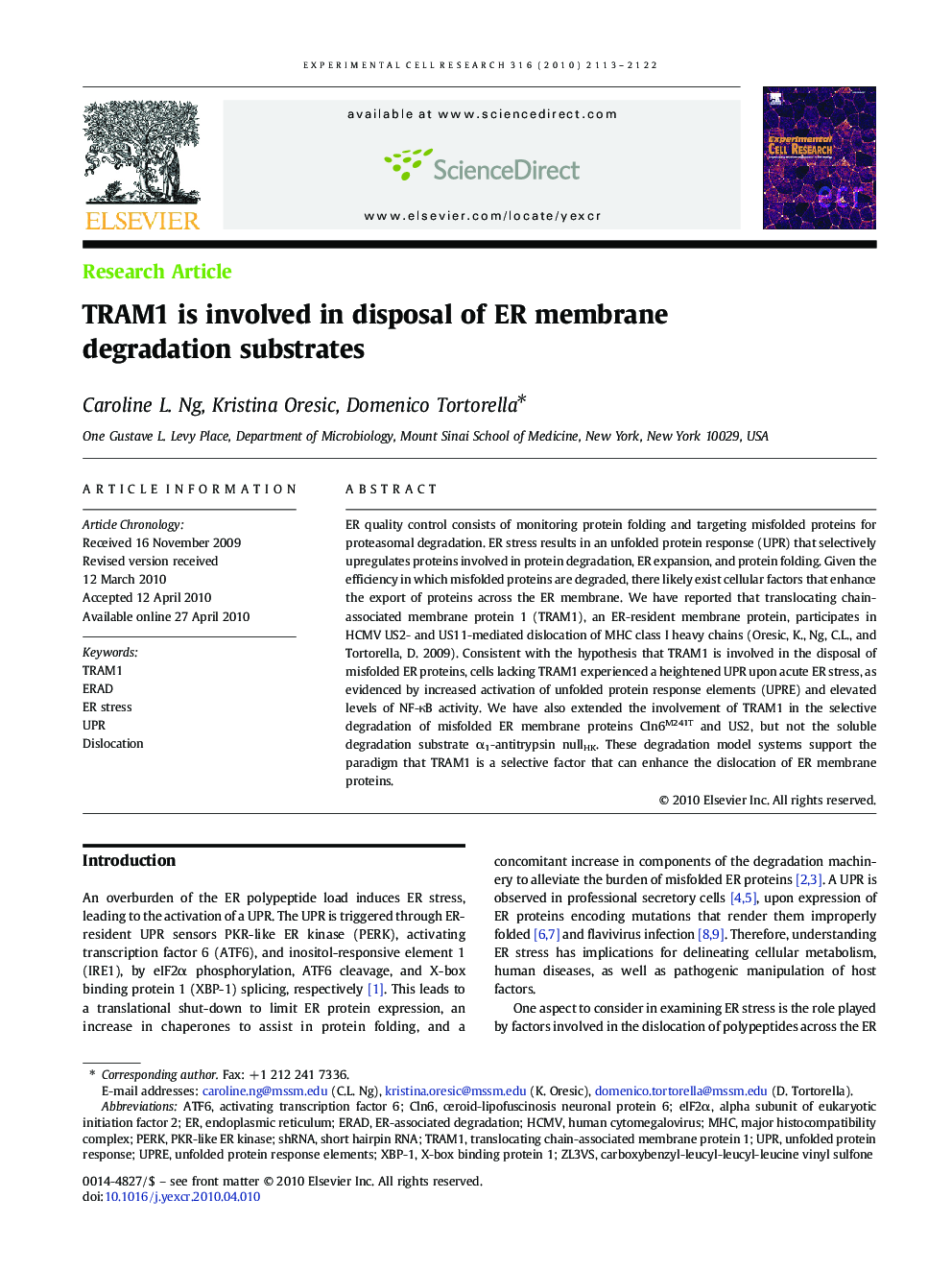| Article ID | Journal | Published Year | Pages | File Type |
|---|---|---|---|---|
| 2132081 | Experimental Cell Research | 2010 | 10 Pages |
ER quality control consists of monitoring protein folding and targeting misfolded proteins for proteasomal degradation. ER stress results in an unfolded protein response (UPR) that selectively upregulates proteins involved in protein degradation, ER expansion, and protein folding. Given the efficiency in which misfolded proteins are degraded, there likely exist cellular factors that enhance the export of proteins across the ER membrane. We have reported that translocating chain-associated membrane protein 1 (TRAM1), an ER-resident membrane protein, participates in HCMV US2- and US11-mediated dislocation of MHC class I heavy chains (Oresic, K., Ng, C.L., and Tortorella, D. 2009). Consistent with the hypothesis that TRAM1 is involved in the disposal of misfolded ER proteins, cells lacking TRAM1 experienced a heightened UPR upon acute ER stress, as evidenced by increased activation of unfolded protein response elements (UPRE) and elevated levels of NF-κB activity. We have also extended the involvement of TRAM1 in the selective degradation of misfolded ER membrane proteins Cln6M241T and US2, but not the soluble degradation substrate α1-antitrypsin nullHK. These degradation model systems support the paradigm that TRAM1 is a selective factor that can enhance the dislocation of ER membrane proteins.
